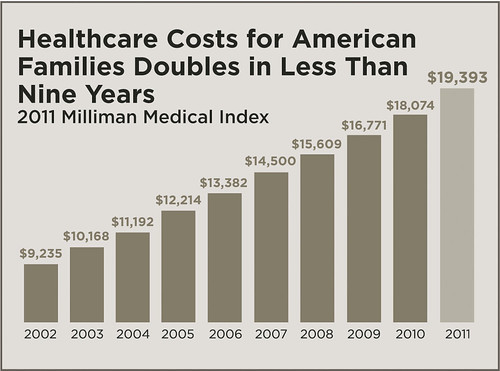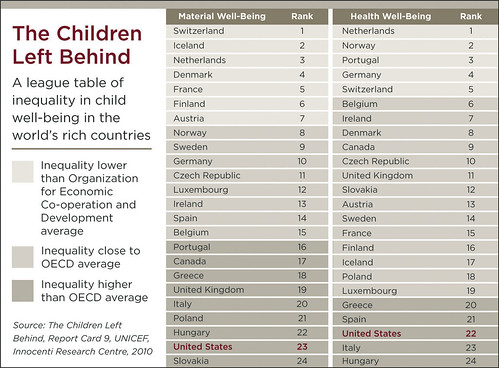- One in four working-age Americans went without insurance at some point in 2011.
Reuters | April 2012
- One-third of Americans are in families struggling in some way to pay medical bills, according to the Centers for Disease Control. New York Times | March 2012

- Health insurance premiums have jumped 50 percent on average the past seven years with more than six in 10 Americans now living in states where their premiums consume a fifth or more of median earnings. Washington Post | November 2011
- The Commonwealth Fund, a private foundation that sponsors health care research, estimates that 30 million Americans in 2010 were contacted by collection agencies for unpaid medical bills, according to a study by the Commonwealth Fund. Even after the bills have been paid off, the record of the collection action can stay on a credit report for up to seven years, dragging down credit scores and driving up the cost of financing a home. Associated Press | April 2012
- The number of Americans heading to emergency rooms for routine dental problems is up 16 percent, at a cost of 10 times more than preventive care with fewer treatment options than a dentist's office. Associated Press | February 2012

- The percentage of adults with no health insurance at 17.3 percent in the third quarter of 2011 was the highest on record, up from 14.4 percent just three years earlier, Gallup reported. Firedoglake | January 2012
- The U.S. stands out among high income countries for sick adults having cost and access problems with 27 percent unable to pay medical bills in the past year, compared to from 1 to 14 percent in other countries, and 42 percent skipping doctors visits, recommended care, or not filling prescriptions. Commonwealth Fund | November 2011
- More than 80 percent of U.S. counties fall far in life expectancy compared to nations with the best rankings. Some U.S. counties are more than 50 years behind their international counterparts, meaning they have the life expectancy that those nations had in 1957.
ABC News | March 2012



